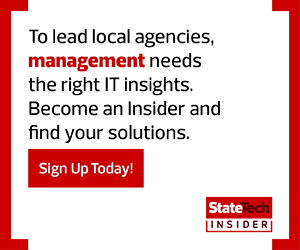The Benefits of E-Procurement for Government
A 2018 survey from the National Association of State Procurement Officials found that 46 states had, at that point, implemented electronic procurement. All but one responding jurisdiction had indicated they use an electronic procurement or enterprise resource planning (ERP) system.
It’s easy to see why states have moved so decisively in favor of e-procurement solutions. As a Michigan State University article notes, e-procurement helps cut costs.
“Built-in monitoring tools help control costs and maximize performance, reducing overhead and paperwork,” the article notes. “Fully automated systems streamline processes and can result in a faster cycle from creating an order to fulfillment. There also is an opportunity for a larger selection of products and services.”
States can also shorten their purchasing cycles via centralized transaction tracking systems. These streamline “reporting on orders, payments, and requisitions, as well as ensuring contract compliance, all of which can reduce delivery time,” the article notes. E-procurement also enables better control over inventory.
“Centralized purchasing plays a strategic role by helping states develop an enterprise vision for procurement,” notes a Governing Institute white paper on e-procurement. “And because it helps leverage statewide spending, it enhances agency relations and communications and addresses risk management.”
Perhaps best of all, e-procurement enhances transparency for all of the stakeholders involved, giving IT leaders, line of business leaders and the public easier access to procurement data. That data includes current and past procurements and contracts as well as possible future procurements, the Michigan State article notes. It also includes detailed information on rules, processes and standards for each procurement; information on bidding opportunities and statewide contracts; and information on vendor names, items procured, prices paid and the purchasing agency.
“Agencies can look at where they’re spending money and the major categories where the most spending is occurring,” Center for Digital Government Senior Fellow Dugan Petty, who also served in Oregon state government for 15 years, says in the white paper. “Based on market analysis, they can then determine how their spending compares to the rest of the market and if they are getting optimal pricing. By focusing on where the greatest spend is, government can buy more effectively.”
E-procurement can also help agencies getter a better sense of what they are spending money on and whether those tax dollars could be more wisely spent elsewhere. For example, some staff members could be issued tablets instead of PCs, the white paper notes.
How State Government Are Using E-Procurement
There are several examples states can look to follow as they consider ramping up their use of e-procurement tools.
Virginia has long been seen as a leader in e-procurement with its eVA portal. The platform is used by more than 245 state agencies and higher education institutions and more than 900 local governments and public bodies. It is used to announce bidding opportunities, receive quotes, order placement and approvals, conduct contract management and more.
The marketplace includes nearly 100,000 businesses competing to provide the commonwealth with goods and services, and Virginia says using it results in $25 million in savings annually. While that may not seem like a lot of money in the current context, every little bit of saving can help stave off cuts somewhere else in a state’s budget.
Meanwhile, Connecticut has developed a “problem-based” procurement approach, which focuses less on narrowly defined procurement specifications for an individual IT project and instead defines a problem and lets vendors propose novel solutions.
E-procurement is not a panacea. And adopting an e-procurement platform effectively requires integration with back-end systems to enable critical data to flow between the two platforms. However, now is the time for states to lean more heavily into e-procurement tools to save money and stay on top of spending.
This article is part of StateTech's CITizen blog series. Please join the discussion on Twitter by using the #StateLocalIT hashtag.












